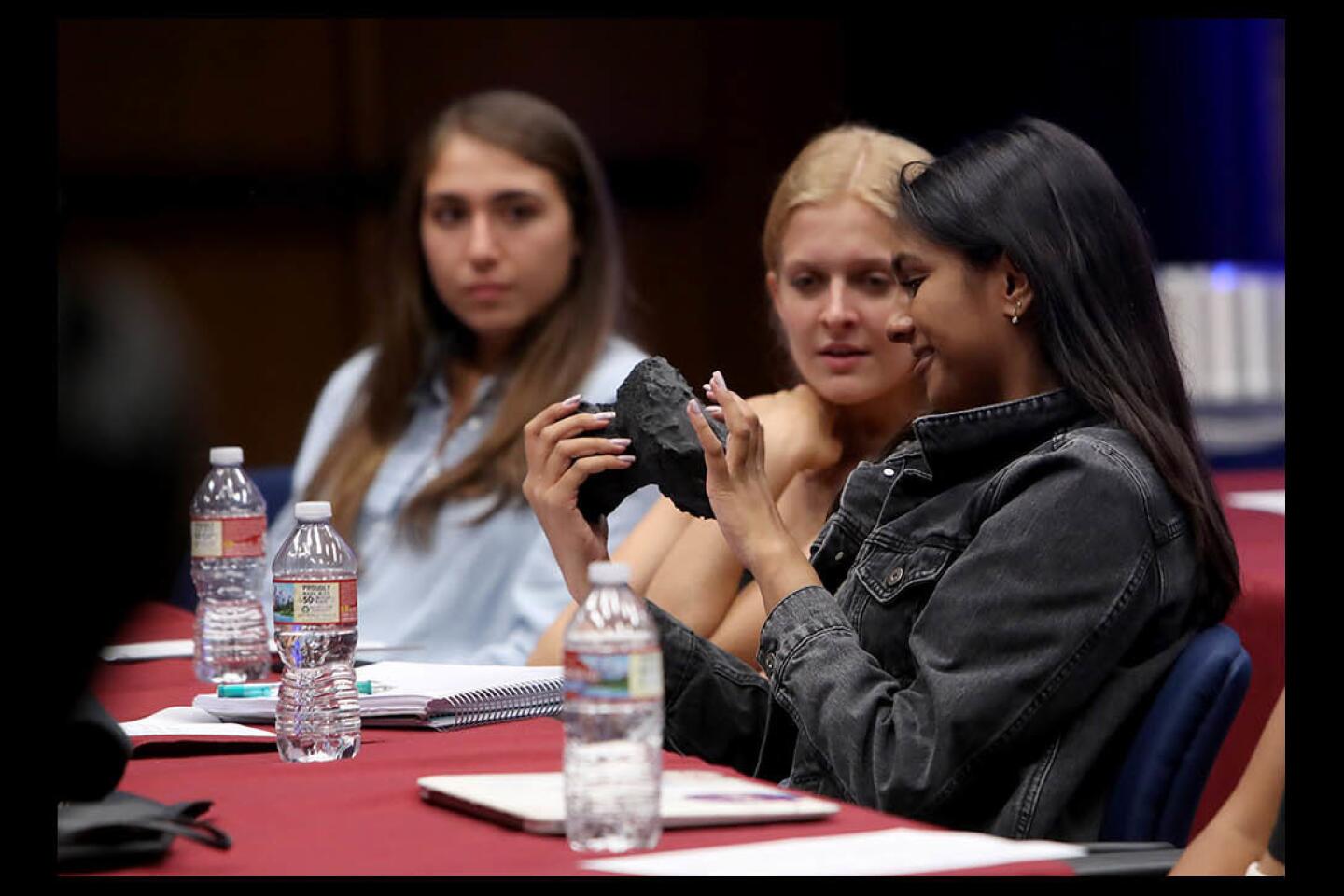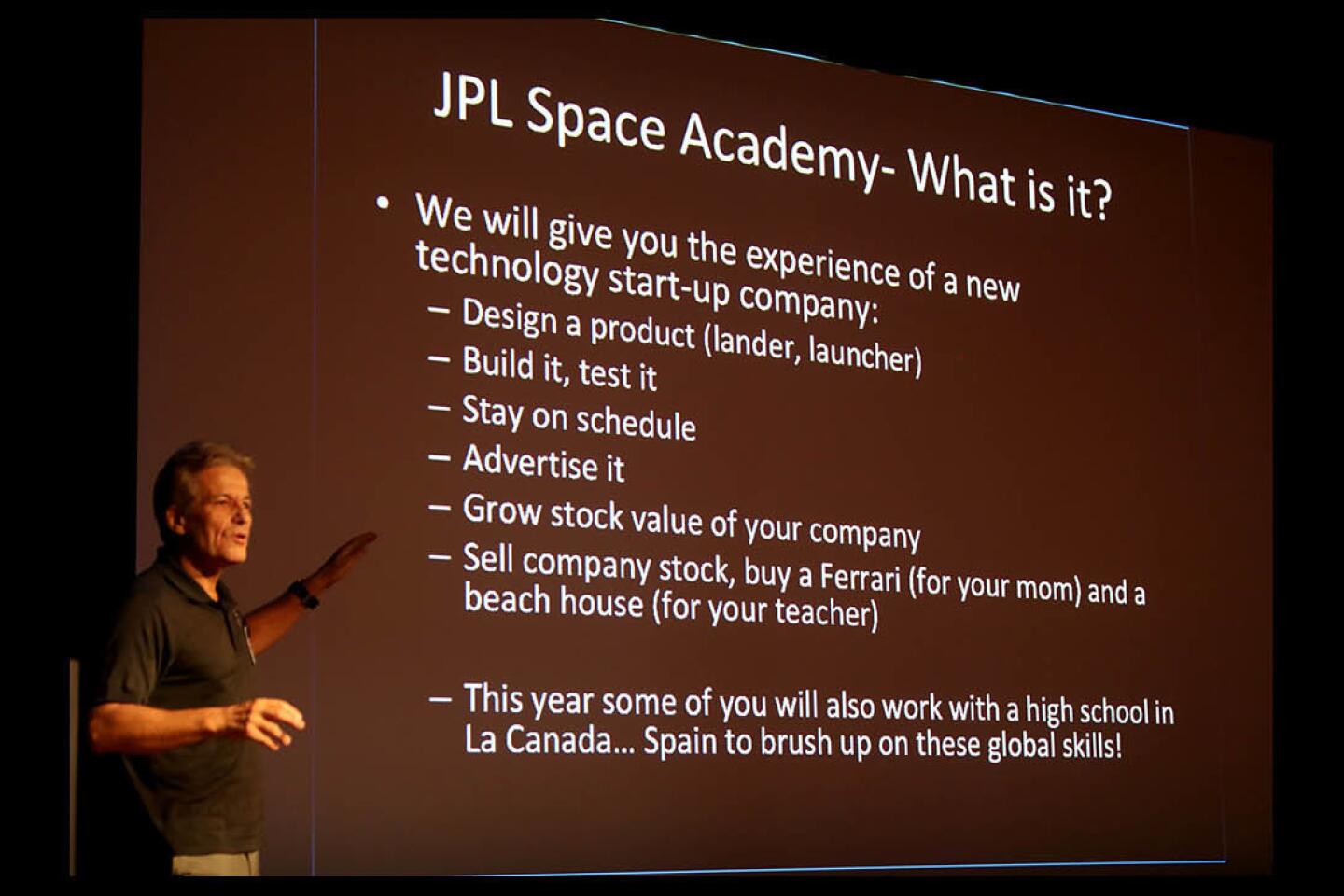Students embark on mission to apply physics, business basics in JPL Space Academy
On a recent Friday afternoon Jet Propulsion Laboratory’s von Kármán Auditorium opened its doors to a throng of high school students whose casual attire belied the seriousness of the high-level work they would conduct in the two months ahead.
About 40 high school seniors, mostly from La Cañada High School, were there as enrollees in the JPL Space Academy, a program that lets students design and build “rocket” launchers in virtual tech startup companies they must promote and sell to stockholders. Another 10 student alumni will play consultant roles.
The program is the brain-child of Art Chmielewski, a JPL project manager for an international team that in 2004 helped launch the European Space Agency’s Rosetta spacecraft toward the 67P/Churyumov-Gerasimenko comet in hopes of placing tiny lander Philae on its craggy, uncertain surface.
When the lander became lost and couldn’t provide a communication signal, scientists worked for more than a year before the application of basic physics principles helped them pinpoint its location. Chmielewski shared the misadventure in a subsequent university lecture, and interested students built models to recreate the scenario.
Chmielewski began to imagine bringing physics lessons to life for high school students through a hands-on learning experience. LCHS physics teacher Nate Fulmer, who works as a consultant at JPL, was eventually enlisted to help with the curriculum and weekly lessons.
“Kids study a physics book — they can memorize it, do 15 homework problems and get an A on the test, but still they don’t know what it means,” Chmielewski said. “Here, every week they come out and present on a NASA stage.”
Started in 2013, the academy has grown. Chmielewski received 140 applications from interested students at and beyond La Cañada High School, so selected seniors for the honor. This year, each projectile will house its own “payload,” an electronic sensor that can record the maximum height of each elastic or gravitational launch.
And thanks to the involvement of the La Cañada Flintridge Sister Cities Assn., participants this year will share their work with students of Villanueva de la Cañada, Spain, home of its own European Space Astronomy Centre.
After a brief introduction Friday, students broke into small teams and were immediately tasked with forming a small company. With markers in hand, they brainstormed what their launchers might look like.
“Your goal is to get this thing as high up in the air as possible and land safely with your entire payload intact,” Fulmer explained. “The most important rule out of all this is to have fun — pick up a few new skills, learn a thing or two and enjoy yourselves.”
In less than an hour, eight teams were presenting their company names and having their designs and communication skills critiqued by Chmielewski and his cohort of consultants.
“Ren Enterprises” — comprising LCHS seniors Solenn Matsuka, Rajvi Kumar, Naiara Munich and Emily Truong — explained how their trebuchet design would launch a spherical projectile from a pouch fastened with stretchy exercise bands.
LCHS senior Kevin Oghalai, of company “Up Chuck,” admitted his team’s cube- and triangle-shaped launcher was still a work in progress.
“We’re not exactly sure what our project is going to look like,” he said. “If it looks like it’s going to break we’re going to add more wood. If it looks like it’s not going high enough, we’ll add more rubber.”
In future classes, students will build launchers, pitch their companies to investors, wire circuits for the onboard sensors and make predictions based on physics. In late October, they’ll take their “rockets” to JPL’s Mars Yard and test their predictions in the first of several launches.
The class concludes with a simulated press conference, where students will be grilled on their products and companies in a Q&A session.
Twitter: @SaraCardine






